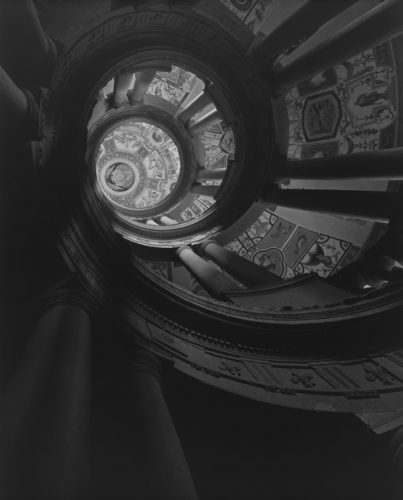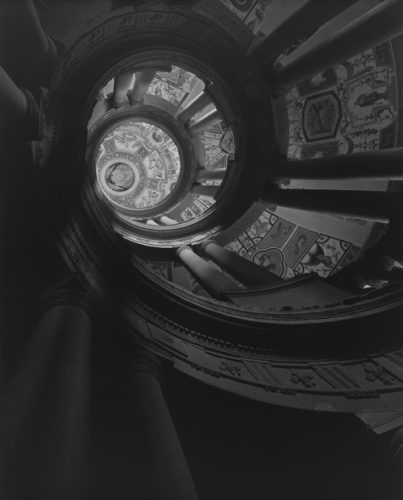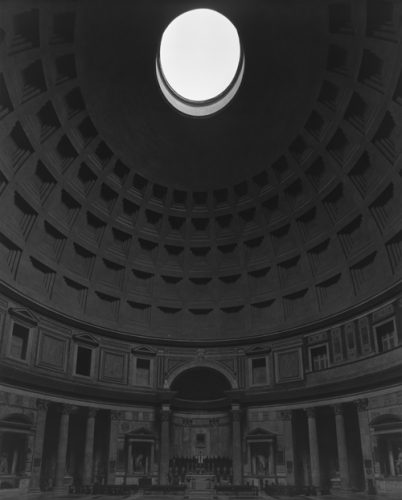Exhibitions
Hiroshi Sugimoto Quattro Ragazzi
2018.10.05(Fri) - 2018.11.04(Sun)

Overview
MOA Museum of Art underwent a total overhaul during 2016. The interior design was undertaken by the New Material Research Laboratory (NMRL), led by Hiroshi Sugimoto and Tomoyuki Sakakida, and the work was completed in February 2017. Later that year, Sugimoto held his exhibition “Hiroshi Sugimoto: Gates of Paradise” at the Japan Society in New York. To commemorate the reopening of the Museum, we are presenting this special exhibition entitled “Nobunaga and Quattro Ragazzi: Hopes and Illusions of Momoyama Renaissance,” introducing his “Gates of Paradise” first time in Japan. The Quattro Ragazzi, described in a book by the same title and written by a historian of European art, Midori Wakakuwa, refers to an emissary to the Pope in Rome dispatched in 1582, formed by four young Japanese men, also known as the Tensho Embassy.
The exhibition combines the “Hiroshi Sugimoto: Gates of Paradise” and artworks of the Momoyama period, notably those in relation to the Tensho Embassy, the Nanban art and Oda Nobunaga, a key figure in the wake of modern Japan. The exhibition showcases the exuberant art and culture that flourished during the Momoyama period.
Hiroshi Sugimoto: Gates of Paradise - a cross road between Japan and Europe
In Spring 2015, I traveled various places in Europe as part of my life-long project, photographing theaters. One place I visited was Teatro Olimpico in Vicenza, in the central part of Veneto, designed by Andrea Palladio. It is the oldest surviving opera house in Europe and is decorated with numerous Greek-style sculptures inside. The ceiling of the foyer is adorned with beautiful fresco paintings. During my visit, the theater director pointed at one section of this fresco and explained to me that the painting depicted a scene of the reception held for the Japanese envoys who paid a visit to this town on their way to Rome in 1585, the year the theater first opened. When I took a good look, I could make out four Japanese-looking people in the front row. They were the famous boy envoys, the Quattro Ragazzi, of the Taisho Embassy.
Curiosity prompted me to find out their footsteps in Italy; they disembarked at the port of Livorno and traveled through Pisa, Florence and Siena to Rome, then visited Assisi and Venice. I realized that I had indeed been to the Pantheon in Rome and seen the Leaning Tower of Pisa as well as the Siena Duomo. These buildings had already been in existence at the time of the Tensho Embassy’s sojourn. It occurred to me that I was seeing with my own eyes the same buildings that the young ambassadors had seen. This realization struck me with a pang of sensation as if a voice spoke to me saying, “we want you to see through your eyes the same European scenes that we once saw.” Was it a voice that transcended from heaven or was it my inner voice?
I made a conscious decision to visit and photograph all of the places they had visited. It was an inevitable outcome prompted by chance encounters. I am not sure how authentic the scenes would be after more than 400 years since their time, but I managed to photograph the Pantheon empty of people under full moon at night, the spiral staircase of Villa Farnese when it was closed, the Florence Duomo before dawn and the Gate of Paradise, a Renaissance masterpiece now in the Duomo Museum, when the museum was shut.
Pope Gregory XIII welcomed the four boys because he saw them as renewing the spirits of the three wise men coming from the East to pay homage to the new born Christ. The first encounter of the Japanese with the West, and Westerners’ first encounter with Japan - that sense of mutual surprise from over four centuries ago still flows in my blood stream.
I visited the places of origin of my own spirits and made a journey for a visual confirmation purpose, which I unveil here for you at this exhibition.
Hiroshi Sugimoto
 Staircase of Villa Farnese Hiroshi Sugimoto 2016
Staircase of Villa Farnese Hiroshi Sugimoto 2016
 Pantheon Hiroshi Sugimoto 2015
Pantheon Hiroshi Sugimoto 2015
Hroshi Sugimoto
Born in Tokyo in 1948, Sugimoto graduated from Rikkyo University and moved to the USA in 1970. He then settled in New York City in 1974. His works, precisely produced using a large-format camera, can be found in many galleries and museums across the world. His recent activities extend to writing and designing as well as staging of the Noh and Jōruri theaters. Major awards include the Japanese Art Association’s Praemium Imperiale prize (2009), Medal with Purple Ribbon (2010), Officier of the Ordre des Arts et des Lettres (2013), Isamu Noguchi Award (2014) and Person of Cultural Merit (2017).
